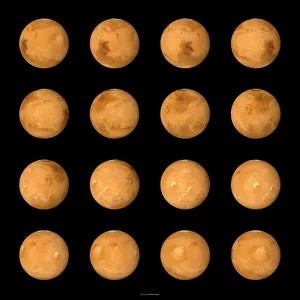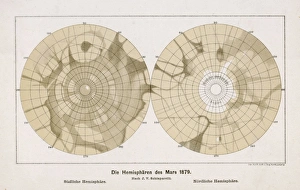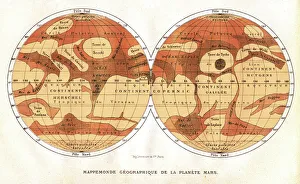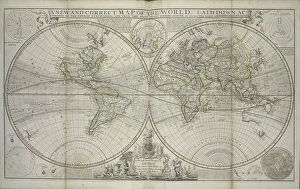Hemispheres Collection
"Hemispheres: Exploring the Boundaries of Knowledge" In the 17th century, world maps were meticulously crafted to depict our planet's hemispheres
All Professionally Made to Order for Quick Shipping
"Hemispheres: Exploring the Boundaries of Knowledge" In the 17th century, world maps were meticulously crafted to depict our planet's hemispheres, showcasing the vastness and diversity of Earth. These ancient cartographic marvels allowed us to grasp the concept long before we ventured beyond our own planet. Fast forward to Mars, a celestial body that has captivated humanity for centuries. Composite satellite images reveal its contrasting landscapes, divided into two distinct hemispheres. Giovanni Schiaparelli's groundbreaking observations in 1877 unveiled Mars' dichotomy with his detailed map showcasing its two hemispheres. But it wasn't just Mars that fascinated us; even on Earth, exploration continued. In 1881, a new map emerged based on the latest discoveries - an accurate representation of our ever-evolving understanding of our own home. While outer space intrigued us endlessly, another frontier beckoned – within ourselves. MRI scans provided unprecedented insights into brain anatomy and function. A child's brain illuminated by these scans revealed intricate networks connecting different regions across both hemispheres – a testament to nature's complexity. Artwork depicting brain anatomy further highlighted this duality within ourselves - left hemisphere governing logic and language while right hemisphere embraced creativity and intuition. As we delved deeper into neuroscience, MRI scans continued unraveling mysteries locked within each individual’s mind - unveiling unique patterns in every child’s developing brain as they navigated their journey towards adulthood. From ancient maps charting unknown territories to composite satellite images revealing distant planets’ secrets; from anatomical explorations deep inside human minds to terrestrial globes representing interconnectedness between continents - "hemispheres" symbolize boundaries pushed and knowledge expanded throughout history. Whether gazing at an Eastern Hemisphere map from 1881 or admiring a terrestrial globe made centuries ago using wood, paper gypsum and copper; let these artifacts remind us how curiosity knows no bounds as we continue to explore the hemispheres of our world and beyond.
















































